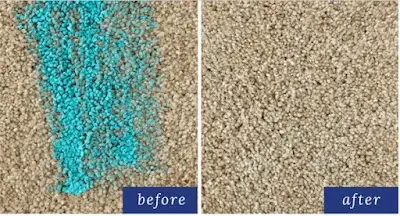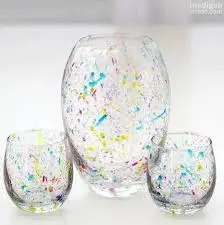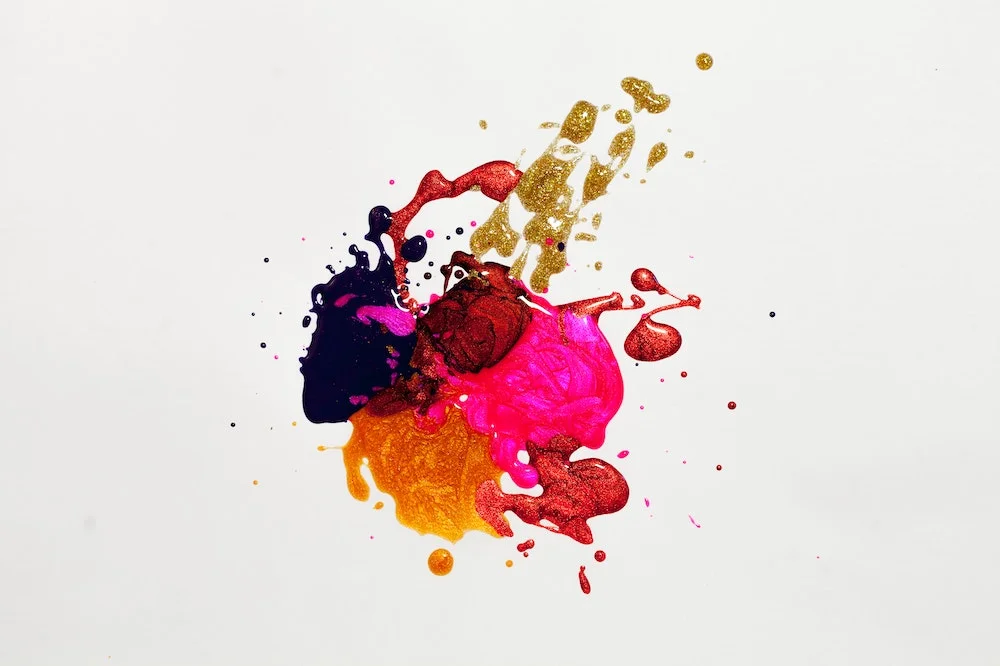Painting is a very fun and enjoyable activity for kids and adults alike and can be everyone’s favorite past-time.
If you are a hobbyist or a professional artist, you might have faced the issue of spilling paints on your clothes or over some furniture. This can feel like a disaster as paints seem to completely ruin your favorite clothes and expensive furniture.
Most people I know just “live with it” and give up on cleaning a paint stain or just throw away their stained clothes, however, all hope is not lost, as there are various ways you can fully clean paint from your clothes.
An important thing to first note is that no matter what method you apply you have to be quick in your approach. Acrylic paints are water-soluble when wet but get hard and resistant to water once they dry. This is because the paint uses an acrylic emulsion to bind the pigment together which does not dissolve in water so when the water evaporates it forms an adherent acrylic-paint film.
You should act fast as acrylics dry quickly and if you are unable to remove the paint and rinse the stain in water or some form of liquid it might become permanent and never come off.
How to Remove Acrylic Paint from your Clothing

Getting paint on your clothes is one of the most common scenario most people find themselves in.
The first crucial step after you notice the paint spill on your clothes is to remove the excess wet paint which you could clean easily with a cloth, however, the best way is to run some cold water on the fabric.
After the excess paint is removed you will be left with a stain, in order to remove the stain you can:
- Put the clothes in a washer and add detergent. It is important to set the washer on cool as hotter settings can make the stain permanent by heat-setting the stain.
- Remove the clothes and keep them soaked in water as it will keep the paint stain from drying and risk it getting permanent (you would still have to put them in the washer later.)
- Put it in a dry cleaner if the fabric is not fit for washing with water.
Before continuing you should check the label and see if you can wash it as fabrics containing acetate or triacetate should not be washed but put straight into a dry cleaner.
The above method will work if the paint stain is fresh, however, by the time we notice a stain on our shirt or pants it’s already dried up, if that’s the case then you can try a few other options:
- Nail Polish Remover – You can use nail polish remover to treat a paint stain as it includes a chemical compound known as Acetone which will help break it down. Apply some nail polish remover on a cloth or cotton ball and press it on the stain. After it softens up, you can just wipe/scrape off the bits of paint and put it in the washer.
- Hairspray – You can use hairspray to spray the affected area, this will make it wet and the paint will start to soften, when the stain is wet take a cloth or sponge, rub it off and put it in the washer.
- Commercial stain removers – These are designed specifically to remove stains. Just follow the instructions on the box and apply the product on your garment. Avoid using products that include harsh chemicals which might not be suitable for fabric.
If you suspect the nail polish remover or hairspray might ruin the fabric you can find a small inconspicuous spot and test it on there to see how it reacts.
Don’t use nail polish remover or hairspray on acetate or triacetate fabrics, as they will get damaged.
How to Remove Acrylic Paint from Upholstery & Carpet

You might have gotten paint on your furniture or in your carpet which may seem daunting to clean as you can’t use the same traditional methods as you did on cleaning the clothes.
Here’s how you do it:
- Take a knife, preferably a butter knife so you don’t tear into the fabric
- Hold the knife at an angle and scrape off the wet paint from the affected area. Be sure to clean your knife after every stroke with a cloth or paper towel
- Take a bucket or container and fill it up with warm water and add some soap or detergent to it.
- Dip a cloth into the warm, soapy water and dab the stain, refrain from rubbing as it could further spread.
- Keep blotting the stain until it goes away
Be sure to just dampen the cloth with the water and not make it too wet otherwise the stain might spread.
If the above method didn’t remove the stain completely then you can try another great alternative.
Put some nail polish remover on a cotton ball or cloth and dab on the stain until it goes away. Keep in mind to not use acetone on acetate or triacetate fabrics. If you’re unsure whether or not the garment will be damaged, try applying some remover on an inconspicuous spot first to see how it reacts.
How to Remove Acrylic Paint from Wood & Plastic

Removing paint stains from wood and plastic might be trickier and harder to remove once the paint is dried up.
Here’s how to do it:
- As soon as you notice a paint spill on any wooden or plastic surface, wipe off the wet paint with a cloth then rinse the cloth in water so the paint doesn’t stick to it
- Next put some vegetable oil on a paper towel and wipe the dry acrylic paint
- Finally, you’ll be left with some dried bits of paint, use a plastic scraper to scrape these off.
Remember not to use a knife to remove paint stains as it could potentially scratch or ruin the surface. A plastic scraper is specifically designed to be used on such surfaces and can be bought from any hardware store
A great alternative to this is using rubbing or denatured alcohol.
- Pour the alcohol on a cotton ball or cloth and clean the surface with circular motions
- After the paint is removed, rinse a cloth in warm, soapy water and wipe the surface free from alcohol
- Use a paper towel to dry the area
How to Remove Acrylic Paint from Glass

You may be hesitant to try any cleaning methods as glass is fragile and can scratch or break if not handled with care.
Here’s how to do it:
- Take a sponge and dip it into a bucket of warm, soapy water, and squeeze out the water
- Rub the sponge thoroughly over the spot until it removes the excess wet paint
- If the paint seems to have dried you can use a utility knife to scrape of the bits
- Hold the blade at a 45 degree angle at start scraping off the stain
- After the bits seem to have come off, use the sponge to clean the glass and then dry it with a cloth or paper towel
Remember to be careful when using a safety razor blade to scrape off the glass and keep the area wet at all times to prevent scratching on the glass.
Be sure to check whether or not the glass is tempered, as a safety blade might scratch the glass.
Conclusion
While painting can be a very enjoyable activity it can also be messy and when accidents do happen it may seem impossible to remove paint from your clothes, carpet, upholstery, or furniture.
This is because acrylic paints are water-soluble and dry quickly. Once the water evaporates from them they turn into a plastic layer.
By reading the above cleaning methods you should realize all hope is not lost as these acrylic paints can be cleaned easily if you are quick to respond and have the right set of tools at your disposal.
If you do get yourself in a mess make sure you bookmark this article so you can refer to it in the future.
Until then, Happy Painting!


